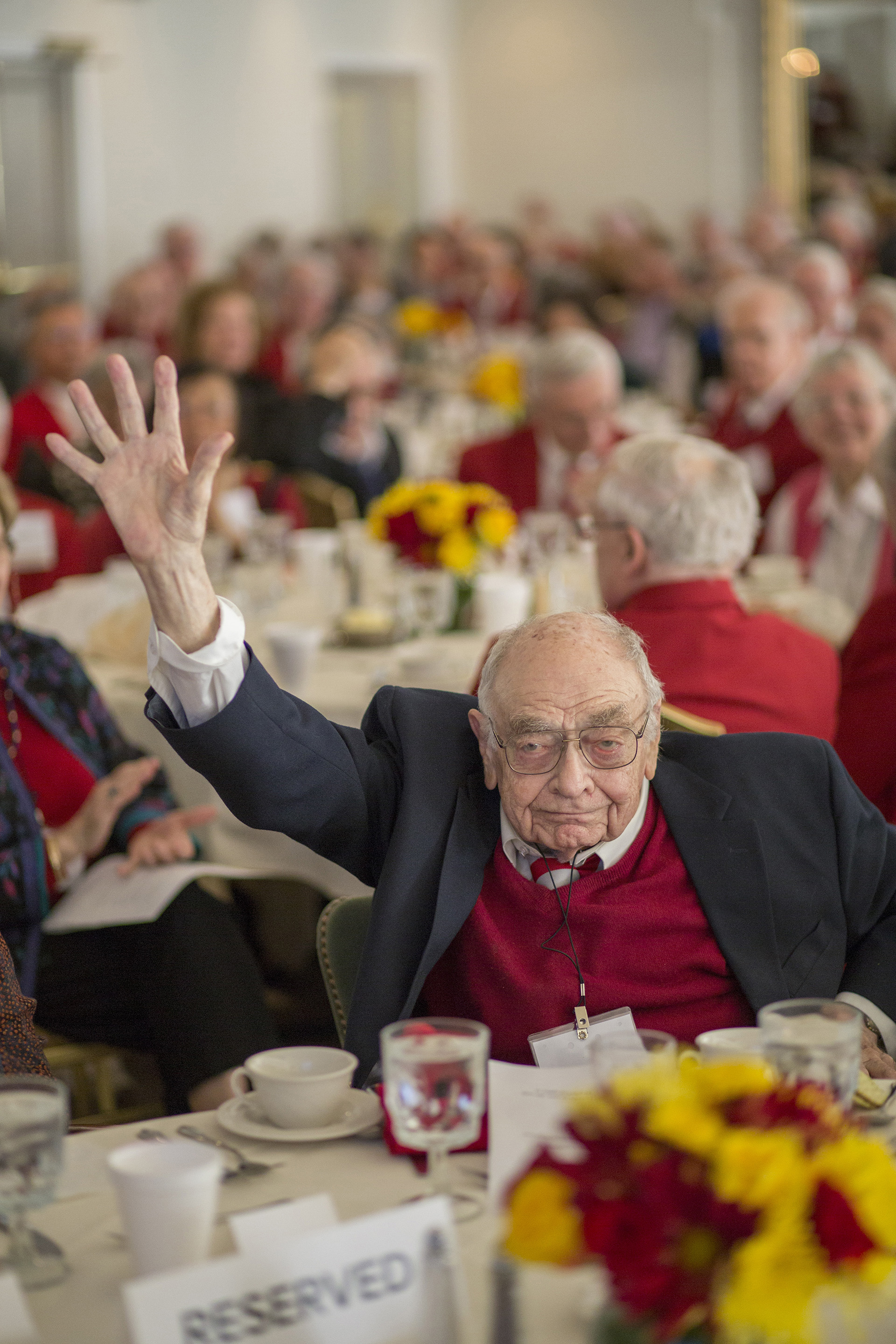
As a volunteer for MIT’s Age Lab, 99-year-old Lew Aronin is doing what he loves most—seeking scientific knowledge for the benefit of humankind. A physics alumnus who attends MIT events and donates annually, Aronin is a member of 85+ Lifestyle Leaders, a group of people 85 and older, including many alumni and spouses, who delve into topics such as age-friendly design, caregiving, and use of technology.
Aronin’s career began during World War II: the Waltham Watch Company hired him to reproduce the verneuil process for making synthetic sapphires, which are an important component of watch bearings. “If the company’s supply from Switzerland was cut off, there was a great fear that the only source of precision bearings would be lost,” says Aronin. “I successfully did this in less than a year.”
When the company folded, Aronin joined the staff of the MIT Metallurgical Project, where he also consulted on the development of the atomic bomb. His research focused on nuclear reactors, and he published an article on radiation damage in the Journal of Applied Physics in 1954. After his department spun off to become a company called Nuclear Metals, he worked as a department manager, and he also contributed two chapters to a textbook called Nuclear Reactor Fuel Elements: Metallurgy and Fabrication.
Aronin first encountered the Institute when his science teacher in Norwood, Massachusetts, took his best students to attend lectures by notables like Harold “Doc” Edgerton and Robert Van de Graaff. The lectures and the campus won him over. Unable to afford a dormitory, Aronin commuted and had a part-time job on campus. “I worked hard and got into MIT with the odds against me,” he says, “and it has served me well.”
One first-year experience left a big impression. On May 6, 1937, while working on a problem set in Building 2, he noticed a sudden darkness. When he looked outside, he saw the Hindenburg overhead, with swastikas on its tail. Three hours later, it crashed in Manchester Township, New Jersey.
Aronin and his late wife, Eleanor, a musician, were married for 59 years. They raised their children in Lexington, Massachusetts, where she became a sought-after piano teacher; he was an active volunteer for the Lions Club and Masons.
Aronin, who retired in 1990, finished his career at the Army Research Laboratory in Watertown, Massachusetts, where he was an expert in beryllium, a chemical element used in cell phones, missiles, and aircraft.
Keep Reading
Most Popular
How scientists traced a mysterious covid case back to six toilets
When wastewater surveillance turns into a hunt for a single infected individual, the ethics get tricky.
The problem with plug-in hybrids? Their drivers.
Plug-in hybrids are often sold as a transition to EVs, but new data from Europe shows we’re still underestimating the emissions they produce.
What’s next for generative video
OpenAI's Sora has raised the bar for AI moviemaking. Here are four things to bear in mind as we wrap our heads around what's coming.
Stay connected
Get the latest updates from
MIT Technology Review
Discover special offers, top stories, upcoming events, and more.